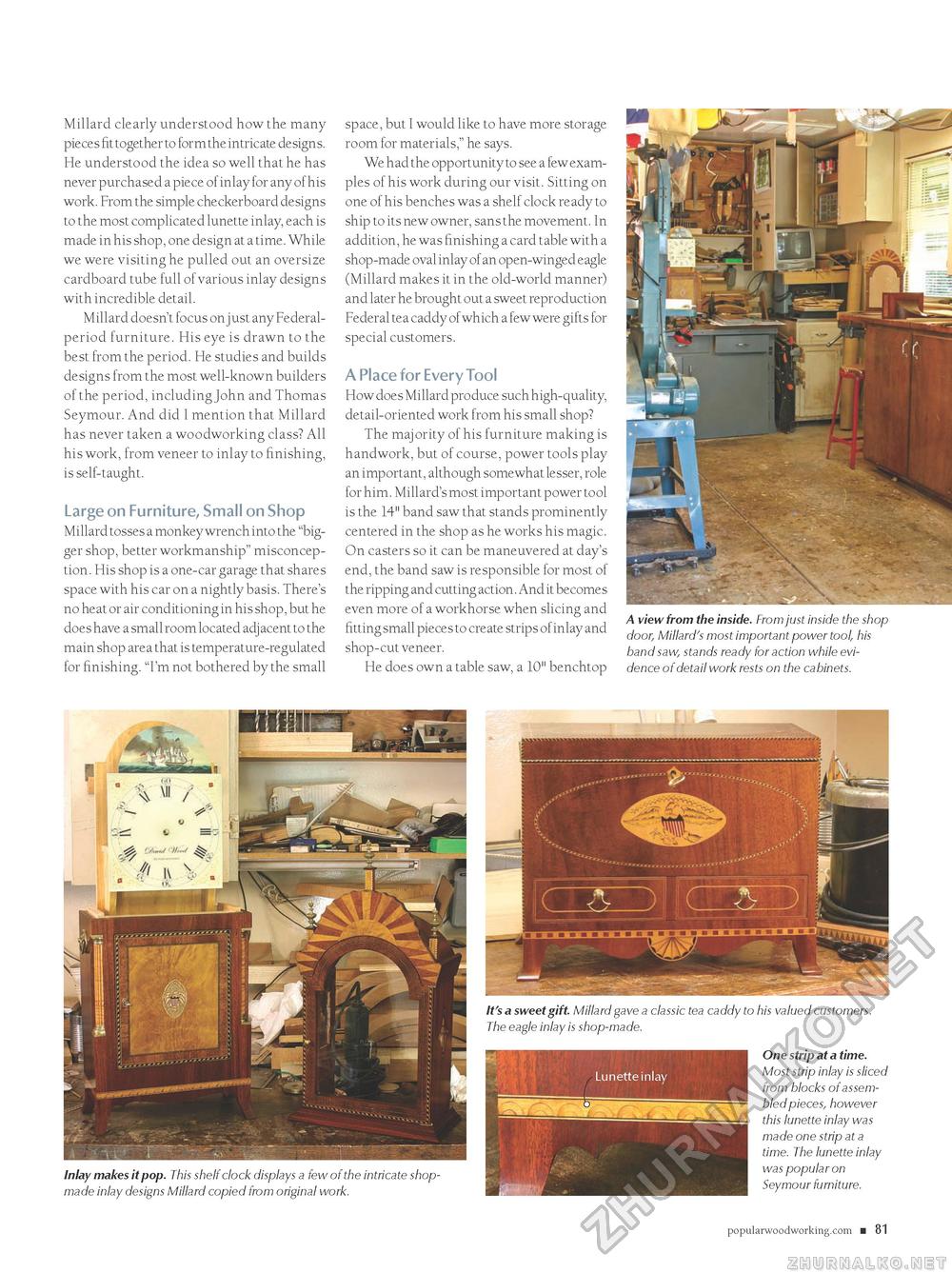Popular Woodworking 2007-11 № 165, страница 83
Millard clearly understood how the many pieces fit together to form the intricate designs. He understood the idea so well that he has never purchased a piece of inlay for any of his work. From the simple checkerboard designs to the most complicated lunette inlay, each is made in his shop, one design at a time. While we were visiting he pulled out an oversize cardboard tube full of various inlay designs with incredible detail. Millard doesn't focus on just any Federal-period furniture. His eye is drawn to the best from the period. He studies and builds designs from the most well-known builders of the period, including John and Thomas Seymour. And did I mention that Millard has never taken a woodworking class? All his work, from veneer to inlay to finishing, is self-taught. Large on Furniture, Small on Shop Millard tosses a monkey wrench into the "bigger shop, better workmanship" misconception. His shop is a one-car garage that shares space with his car on a nightly basis. There's no heat or air conditioning in his shop, but he does have a small room located adj acent to the main shop area that is temperature-regulated for finishing. "I'm not bothered by the small space, but I would like to have more storage room for materials," he says. We had the opportunity to see a few examples of his work during our visit. Sitting on one of his benches was a shelf clock ready to ship to its new owner, sans the movement. In addition, he was finishing a card table with a shop-made oval inlay of an open-winged eagle (Millard makes it in the old-world manner) and later he brought out a sweet reproduction Federal tea caddy of which a few were gifts for special customers. A Place for Every Tool How does Millard produce such high-quality, detail-oriented work from his small shop? The majority of his furniture making is handwork, but of course, power tools play an important, although somewhat lesser, role for him. Millard's most important power tool is the 14" band saw that stands prominently centered in the shop as he works his magic. On casters so it can be maneuvered at day's end, the band saw is responsible for most of the ripping and cutting action. And it becomes even more of a workhorse when slicing and fitting small pieces to create strips of inlay and shop-cut veneer. He does own a table saw, a 10" benchtop A view from the inside. From just inside the shop door, Millard's most important power tool, his band saw, stands ready for action while evidence of detail work rests on the cabinets. Inlay makes it pop. This shelf clock displays a few of the intricate shop-made inlay designs Millard copied from original work. It's a sweet gift. Millard gave a classic tea caddy to his valued customers. The eagle inlay is shop-made. One strip at a time. Most strip inlay is sliced from blocks of assembled pieces, however this lunette inlay was made one strip at a time. The lunette inlay was popular on Seymour furniture. popularwoodworking.com ■ 81 |








